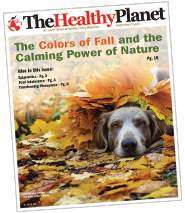By Ava Frick, DVM
It’s great fun to attend training clinics by great riders and trainers and entertainers, but how frustrating it can be when you return home filled with this new knowledge and can’t begin to get your horse to comply. Why is that? One realistic reason is that your horse physically cannot respond appropriately because his muscle tone and body function is not equal from the left side to the right side.
The imbalance may be very slight visually, but mechanically to the horse it can be immense. Take a few moments to assess your horse from all sides looking for symmetry and evenness. Do this from a distance, say 20 feet away, and then close up. Now add some action. Standing on the ground ask the horse to move just the head to his left keeping the head straight (not shifting at the poll) to the middle of the neck. You may need to use a treat to encourage him along. Now do the same to the right. Can he do this without shifting the line of the head or moving the rear end over?
Hurray for those who can and for the rest of you there are some considerations to be made. The lack of motion could be from the neck, or the withers, or the pelvis. Everything is connected and a dysfunction in one area will eventually lead to a problem in another. How can this be resolved? There are ground exercises that can improve neck flexibility and motion. But in difficult cases, a chiropractic adjustment by a doctor certified in animal chiropractic is in order.
Chiropractic is the assessment of joints from the skull, spine, and extremities evaluating for normal or abnormal range of motion. A joint may only move one to three millimeters so alterations may not be visible to the eye. Training and skill in motion palpation is a hallmark to attaining accurate diagnosis and proper adjustments. An adjustment is the correction that the doctor (trained veterinarian or chiropractor) makes to facilitate and reinstate the joint to its normal position and function.
It may take a few days for the horse to totally readjust to the new positioning as muscles need to also adapt. Muscle has memory and when it has been altered for a period of time there is a reconditioning window that needs to be allowed. There is where specific exercises are beneficial.
Horses are into their bodies. They tell us when they feel good and they tell us when something feels bad or uncomfortable. For this prey animal pain signals escape. Anything we can do to keep them feeling great will add to our success and pleasure in riding and competing.
To find a certified doctor in your area visit www.avcadoctors.com.
Ava Frick, DVM
AVCA Certified in Animal Chiropractic
Author; Fitness in Motion™ published by The Lyon’s Press www.avafrick.com. 636-583-1700, Toll free 866-836-3900.


